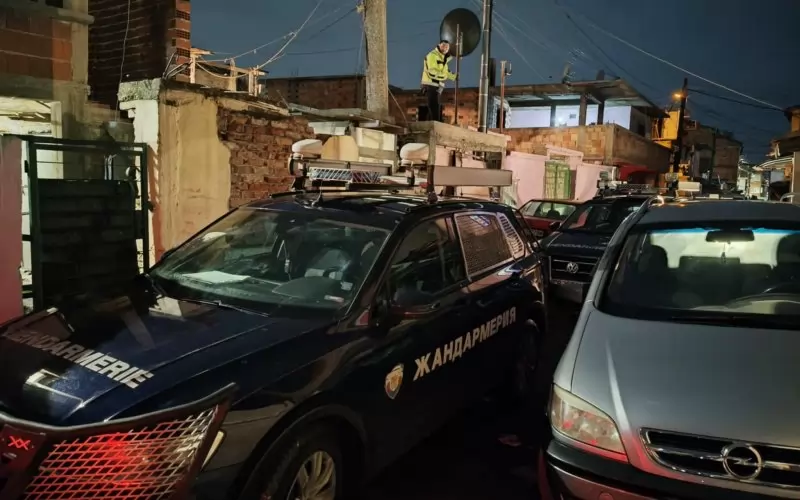The exaggerated reporting bordering hysteria by the media on the case of the Rroma blonde girl Maria reinforces stereotypes about Rroma families with numerous children and irresponsible parents. Michele Widmer (2013) from the Tagesanzeiger writes that Maria is with great probability from a Bulgarian family with eight or ten children. The mother had to leave the child during a stay in Greece due to missing papers and sold her to another Rroma family. While the prosecution speaks of child trafficking, the defence claims the innocence of the Greek Rroma family: they cared care for the girl and only unlawfully adopted her (Blick 2013 I / II).
Mappes-Niediek (2013) explains in his contribution that blonde, blue-eyed Rroma are not unusual in Bulgaria. With the case of Maria, more prejudices about Rroma stealing children are once again stoked, prejudiceswhich are even reflected in European fairy tales. Skinheads in Serbia have tried to take away a blond son from his dark-haired Rroma father. Mappes-Niediek states: “Although the Roma in the Balkans are often designated as “black” and also sometimes even called that, blond hair and blue eyes in the minority are not uncommon. A population genetic analysis of the researcher Kalydijewa Luba at a Roma population in Bulgaria has shown that around half of their ancestors have a genetic no different from the rest of the genome of the Bulgarian population.” Mappes-Niediek (2013/II) expands his coverage of the topic in a detailed article in the TAZ. In it, he calls the actions of the authorities as “King Kong schema”: In a view loaded with prejudices, a blond, blue-eyed child cannot possibly belong to a dark-skinned black-haired Rroma family: “A pattern of actual theft of children by Rroma does not exist. Such a scheme is not documented, not historical. What there is, is a pattern of stories. That soon the “black man” comes and takes you away with him, is an integral part of the education meant to scare children and not only in the Balkans.”
In Ireland, as a reaction to Maria’s story, a seven years old blond girl was taken from her parents. It required a positive DNA test to disprove the official suspicion of child abduction. The procedure ran into massive criticism on the Irish authorities action and response (Basler Zeitung 2013).
Leuthold (2013) of 20 minutes gives a surprisingly sophisticated contextual report on the social exclusion of Rroma in the wake of the media attention to the case of Maria. It emphasizes the prevalence of prejudice and the massively larger impediments of integration by the majority of the European societies. As can be read in the comments section, this emphasis on the systematic exclusion raises once more the question of the relationship between social structures and the personal power of action of individuals and groups. It is wrong, in fact, to attribute to Rroma a pure victim role, but it is also questionable if their fate alone ascribes her own actions. It is the combination of socio-political structures and the reaction to it, which lead to the real behaviour patterns of individuals.
- Blick (2013/I) Kostete Maria 1200 Franken? In: Blick online vom 22.10.2013. http://www.blick.ch/news/ausland/kostete-maria-1200-franken-id2485339.html
- Blick (2013/II) Bei diesen Roma lebte Maria. In: Der Blick online vom 21.10.2013. http://www.blick.ch/news/ausland/bei-diesen-roma-lebte-maria-id2483894.html
- Basler Zeitung (2013) Roma-Mädchen in Irland kehrt zu Familie zurück. In: Basler Zeitung online vom 23.10.2013. http://bazonline.ch/panorama/vermischtes/RomaMaedchen-in-Irland-kehrt-zu-Familie-zurueck/story/17411310
- Leuthold, Kartin (2013) Wer sind die Roma? In: 20 Minuten online vom 22.10.2013. http://www.20min.ch/ausland/news/story/Wer-sind-die-Roma–27066988#
- Mappes-Niediek, Norbert (2013) Vorurteil widerlegt: Blonde, blauäugige Roma sind keine Seltenheit. In: Aargauer Zeitung online vom 24.10.2013. http://www.aargauerzeitung.ch/ausland/vorurteil-widerlegt-blonde-blauaeugige-roma-sind-keine-seltenheit-127306658
- Mappes-Niediek, Norbert (2013) Schema King Kong. In: TAZ online vom 24.10.2013. http://www.taz.de/Blonde-Rom-Kinder/!126165/
- Widmer, Michèle (2013) Polizei befragt Roma-Ehepaar im Fall Maria. In: Tages Anzeiger online vom 24.10.2013. http://www.tagesanzeiger.ch/panorama/vermischtes/Polizei-befragt-RomaEhepaar-im-Fall-Maria/story/14437408







